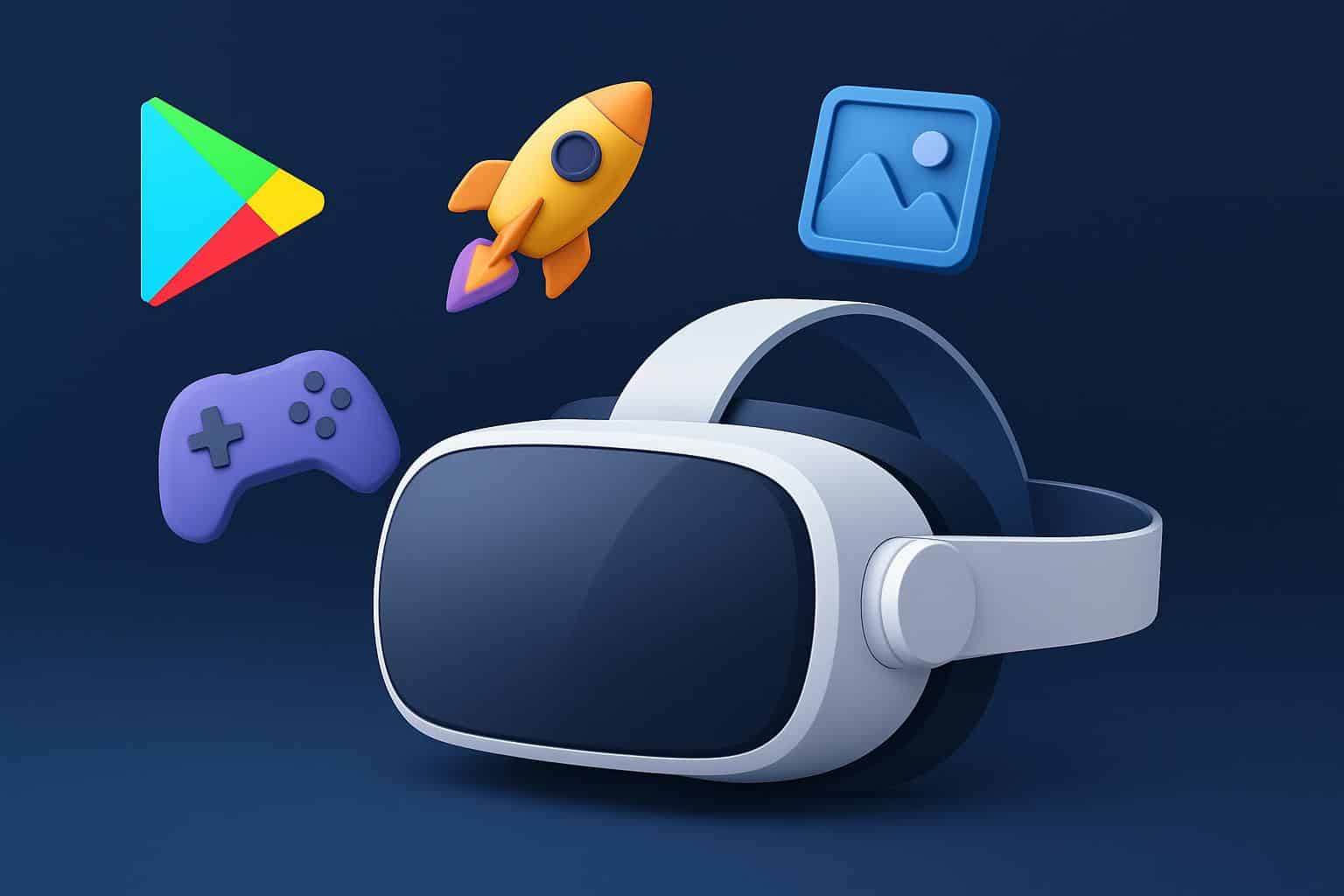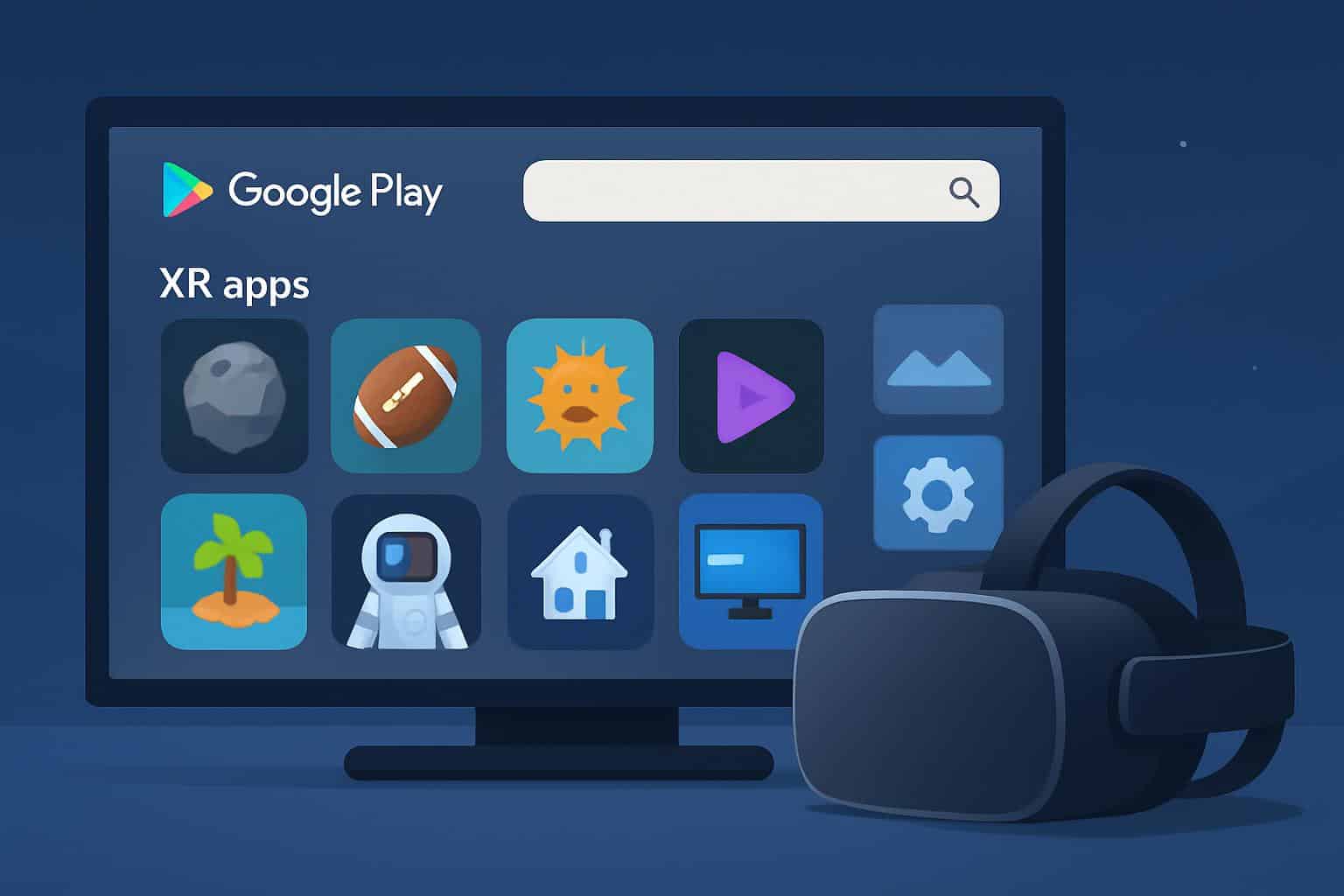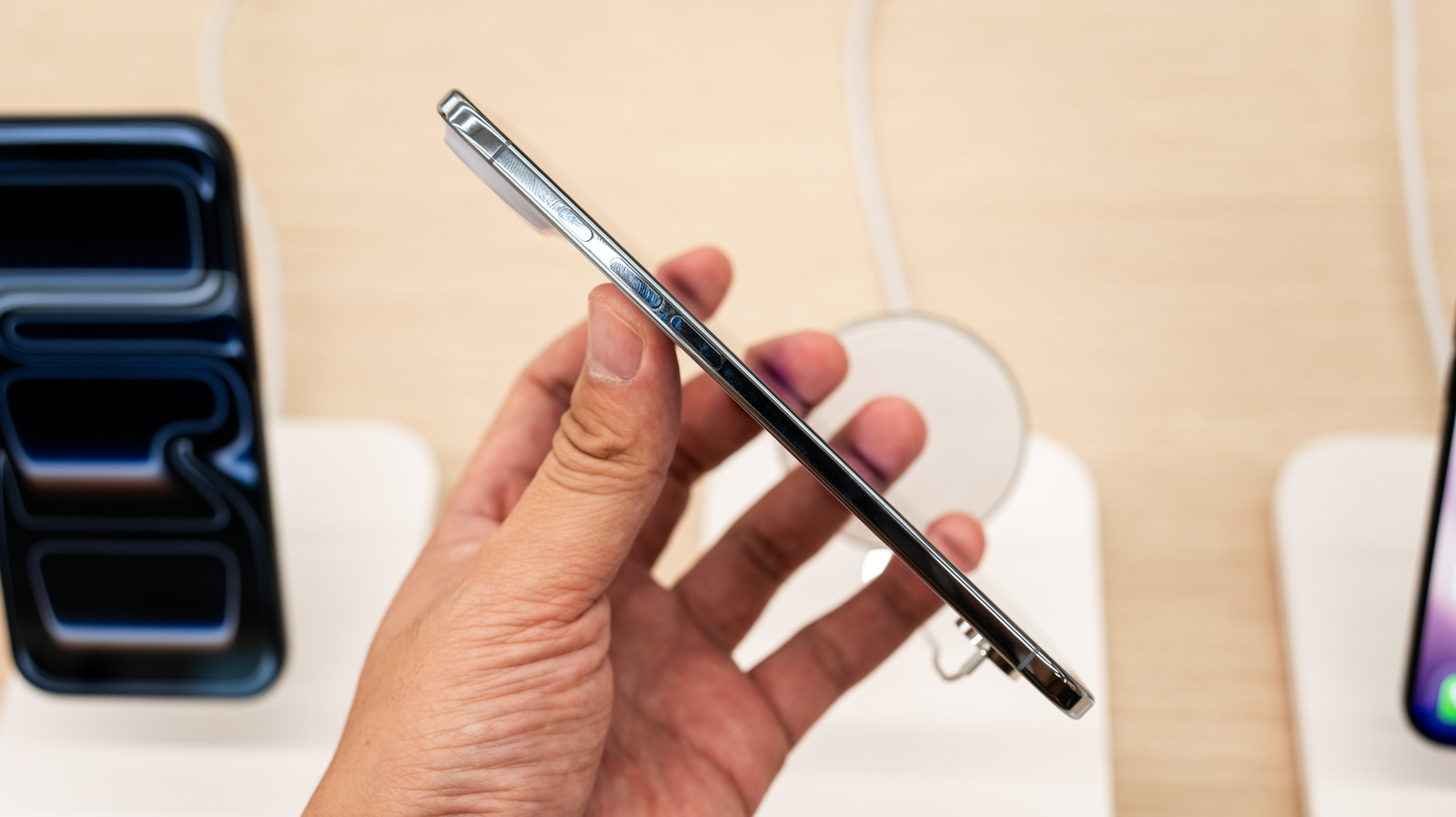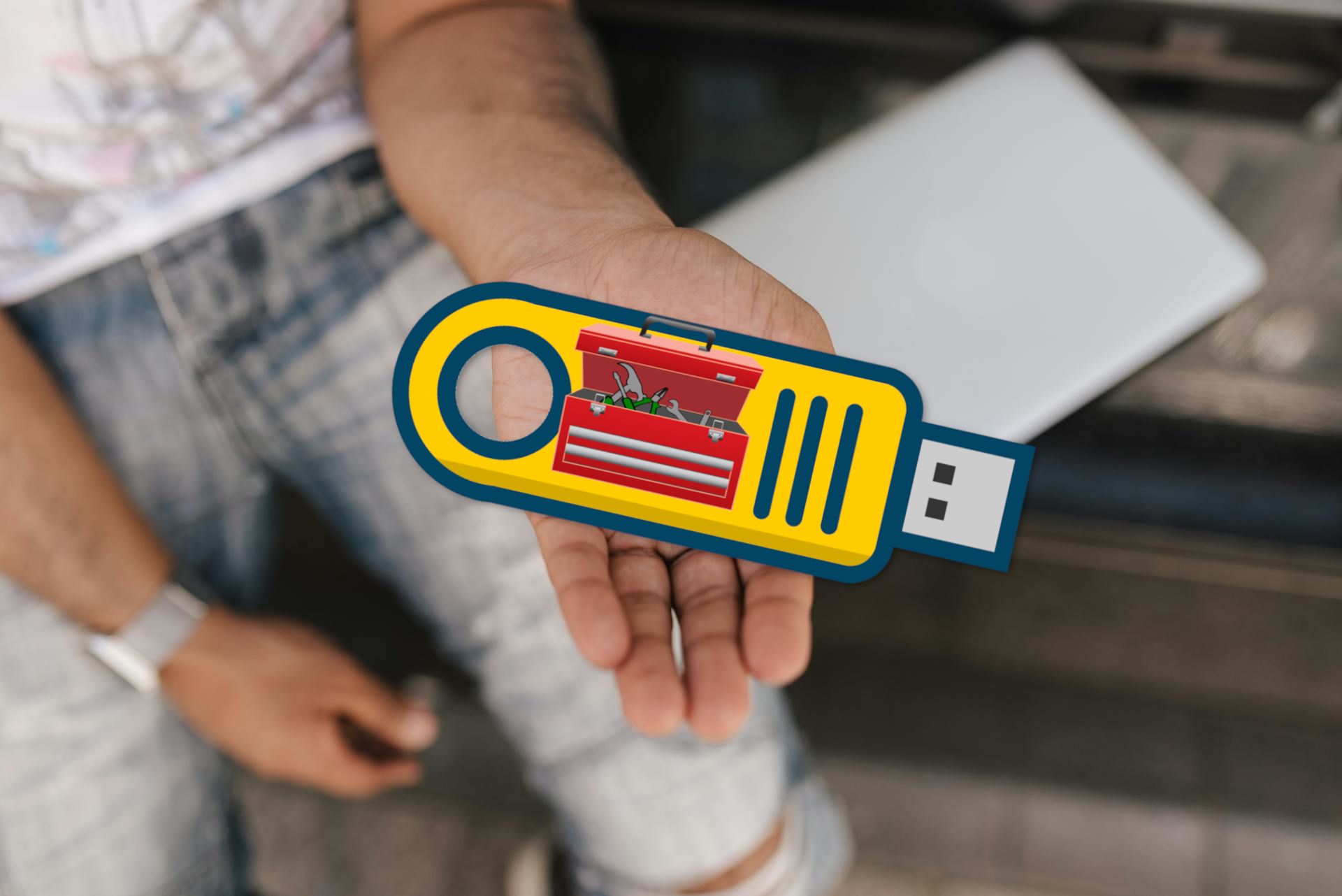Google has stealthily rolled out a curated collection of apps and games in the Play Store, previously referenced as being built for Android VR or simply Daydream. The page gives us our best browsing experience so far of what you’ll be able to play when compatible headsets come. The initial lineup includes games, live content and utilities; the wide variety suggests that Google is looking to launch with more than dusty skeleton of a catalog.
The page, discovered by community sleuths on Reddit, lists apps under a list of XR-ready apps. Among the highlights are Asteroid, sports sim NFL Pro Era, a touch of whimsy with Vacation Simulator and Naver CHZZK XR for interactive video. Virtual Desktop’s presence looks particularly striking, suggesting wireless PCVR streaming when the Quest 2 launches.

Android XR is the result of a collaboration between Google, Samsung and Qualcomm to drive next-gen headsets. As Samsung readies its own flagship, the timing of these Play Store previews point to a joint ecosystem push that relies on the tried-and-true mechanism for Android delivery and billing in order to gain adoption quickly.
What Early Listings Reveal About Android XR Content on Play
The mix of apps suggests three early pillars for Android XR: Entertainment, gaming and utility. NFL Pro Era introduces big-league licensing and mainstream VR sports appeal. Vacation Simulator achieves approachable, high-quality hand interaction that presents a fun side of XR. CHZZK XR by Naver suggests that live video and something more creator-driven won’t just be part of the story at launch, they will be the story.
Importantly, it seems Google is aggregating these apps into a custom dedicated shelf for XR from where they can be easily discovered and installed, rather than simply burying them among standard categories. That matters for discovery. One of the lessons of previous VR platforms is that straightforward wayfinding and editorial curation help users discover the right content quickly, reducing friction in vital first weeks with a new device.
Why Virtual Desktop Is Important For Android XR
Virtual Desktop’s existence is a clear sign that Android XR will accommodate more advanced use cases like PC access over Wi‑Fi and high-fidelity game streaming. The feature-heavy app is a favorite among PCVR players for streaming games from platforms like SteamVR and allegedly mirroring a desktop environment for traditional applications. It benefits from high-bandwidth, low-latency Wi‑Fi networks — think Wi‑Fi 6 and now 6E — where headsets can take advantage of those high refresh rates with very low motion-to-photon delays.
There are two reasons for supporting this class of app at launch.


- It’s a straightaway boost to the content library beyond native mobile XR titles.
- It is a sign to enthusiasts that this platform won’t be inaccessible on the more general-purpose PC ecosystem, and historically many consumers have made choices based almost entirely, if not solely, on this one point about buying headsets.
Android XR would rely on Android’s established developer stack, combine Play billing and distribution along with XR-specific APIs for spatial input and rendering. And the industry trend toward OpenXR — spearheaded by the Khronos Group and joined by big vendors — should hopefully make porting from existing VR stores less rocky. XR templates and toolchains are already shipping with engines such as Unity and Unreal, including support for Android-based XR devices – reducing time-to-market for studios.
The Play Store signal is significant for developers. A single store design, policy, analytics and monetization flow can scale and save operational overhead of launching on one-off or bespoke XR stores. And as Google can contextualize XR apps within mobile, it may be able to drive discovery before its users even buy a headset.
Market Context and Momentum for Upcoming Android XR
IDC analysts have commented that the AR and VR category is set for a rebound over the next few years as new devices, platforms and use cases make their way to market. Competing with the likes of Meta’s Quest lineup and a rush of high-end spatial computing is breathing down their necks to produce an Android-based credible alternative that brings mobile scale together with XR-first design.
A curated launch catalog is important here. Platforms with strong early content tend to attract deeper engagement and retention, especially if they offer a mix of quick-hit experiences and longer games. Google is targeting more than one audience segment at once, by alluding to live sports and casual play as well as PC-class streaming right out of the gate.
What to Watch Next as Android XR Moves Toward Launch
Look for the Play Store shelf to fill out fast as partners wrap builds and platform features lock in. Keep an eye out for more titles from productivity and collaboration makers, too, not to mention fitness titles that have been breakout hits on other VR storefronts. Also, watch the ways in which Google serves up XR content on Android phones and tablets — cross-device discovery might emerge as a silent superpower.
If these early listings hold, then Android XR will come with a better spread than a lot of first-gen platforms. It’s clear there’s a sense of ecosystem-building at play here, with familiar games and live video mixed together and PCVR streaming support suggesting an ecosystem designed to feel like it has utility on day one but ambition over time.


